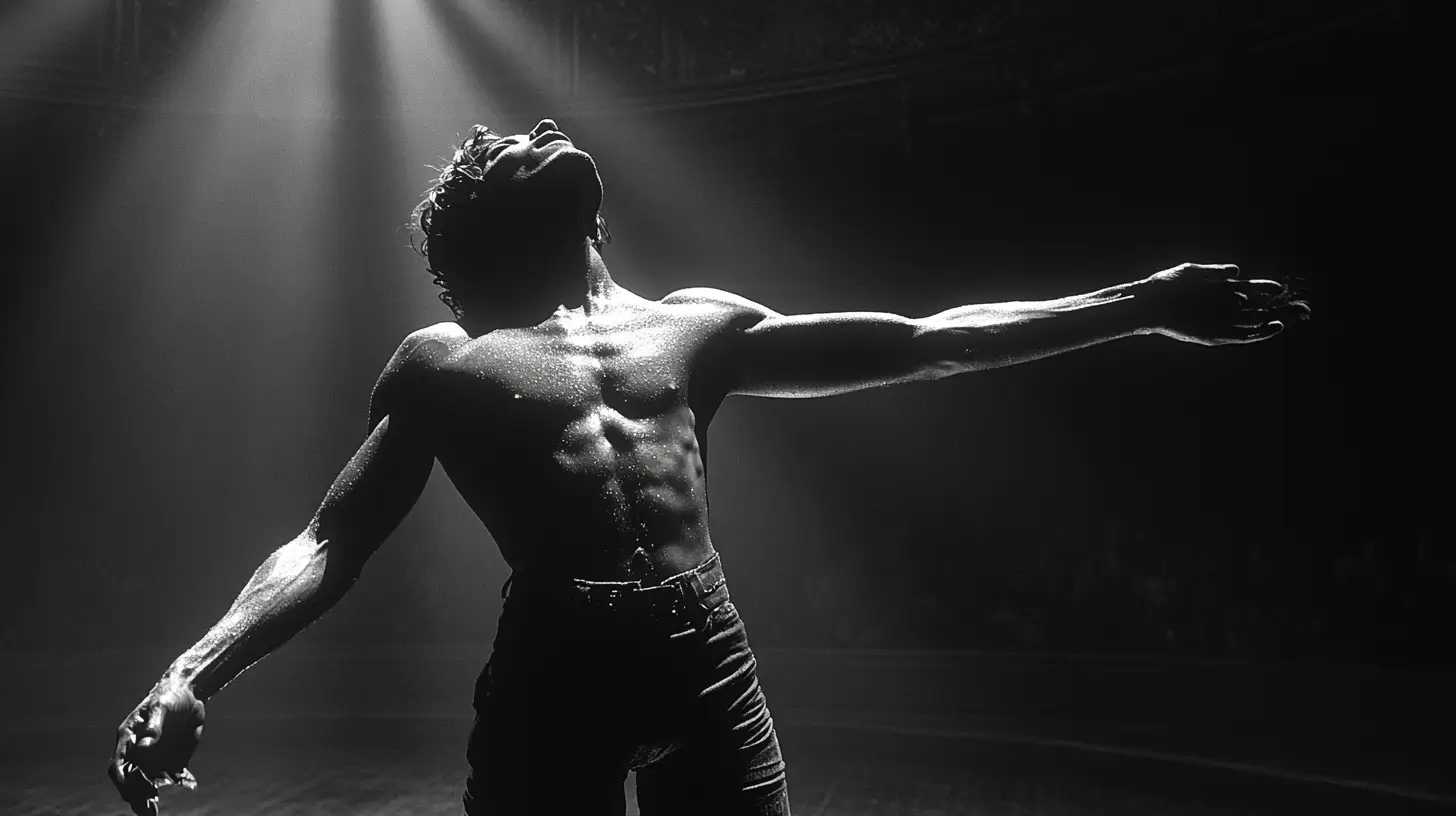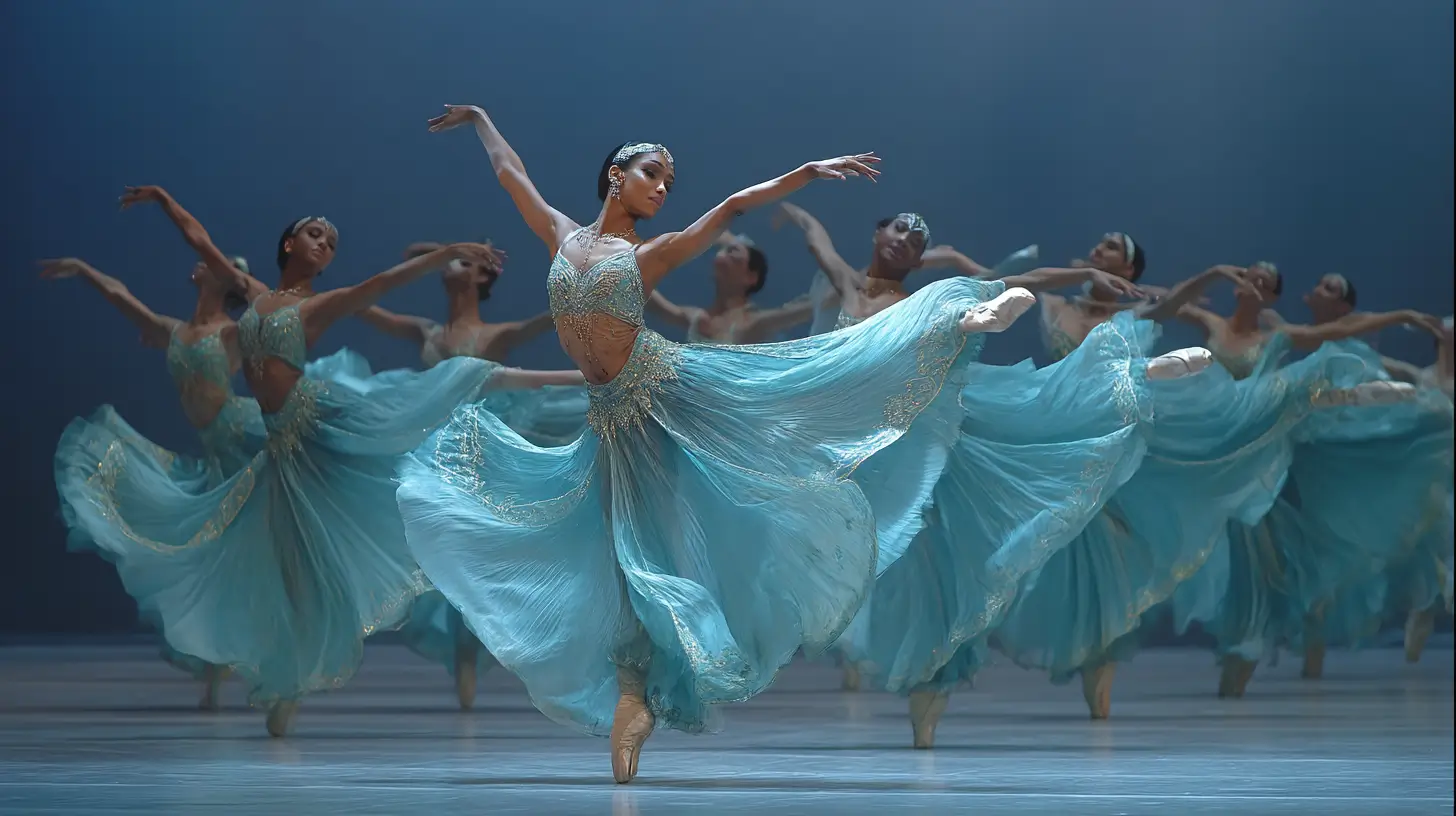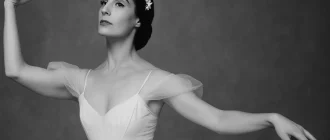La Bayadère ballets, originating in 1877 with Marius Petipa’s choreography and Ludwig Minkus’s music, remain pivotal in classical ballet. Set in ancient India, these ballets weave tales of love and betrayal. This article explores its historical milestones, influential revivals, and how it resonates in modern performances.
Key Takeaways
- The Kirov Ballet’s 1941 revival of ‘La Bayadère’ set a new standard in ballet history, particularly through Natalia Dudinskaya’s innovative interpretation of Nikiya and Vakhtang Chabukiani’s significant contributions.
- The ballet’s introduction to Western audiences in 1961 sparked global interest, leading to numerous adaptations, including notable versions by the Paris Opera Ballet and the American Ballet Theatre.
- Modern reinterpretations of ‘La Bayadère’ address cultural sensitivities, prompting ballet companies to balance tradition with contemporary values, ensuring the ballet’s relevance for modern audiences.
| Feature | Details |
|---|---|
| Title | La Bayadère |
| Composer | Ludwig Minkus |
| Choreographer | Marius Petipa (original) |
| Premiere | February 4, 1877, at the Bolshoi Kamenny Theatre, St. Petersburg, Russia |
| Setting | Ancient India |
| Acts | 3 acts with an apotheosis |
| Genre | Romantic Ballet |
| Notable Variations | The Kingdom of the Shades, Nikiya’s Solo (Act II), Solor’s Solo (Act III) |
| Main Characters | – Nikiya: Temple dancer (bayadère) |
| – Solor: Warrior, Nikiya’s lover | |
| – Gamzatti: The Rajah’s daughter, Solor’s fiancée | |
| Plot Summary | Nikiya, a temple dancer, and Solor, a warrior, fall in love. However, Solor is betrothed to |
| Gamzatti. Driven by jealousy, Gamzatti conspires against Nikiya, leading to her tragic death. | |
| Nikiya’s spirit later appears in the Kingdom of the Shades scene, ultimately reuniting with | |
| Solor beyond the mortal realm. | |
| Famous Scene | Kingdom of the Shades: One of the most iconic scenes in classical ballet, featuring a |
| Mesmerizing corps de ballet in white tutus representing spirits descending from the mountains. | |
| Dance Style | Classical ballet with intricate technique, particularly in grand adagio and expressive solos. |
| Themes | Love, jealousy, betrayal, and the spiritual world |
| Notable Revivals | – Rudolf Nureyev (Paris Opera Ballet, 1992) |
| – Natalia Makarova (American Ballet Theatre, 1980s) | |
| Historical Impact | La Bayadère is celebrated for its technical demands and stunning visuals, particularly the |
| The ethereal “Kingdom of the Shades” scene is a benchmark of classical ballet artistry. |
The Historical Revival by Kirov Ballet

The 1941 revival of “La Bayadère” by the Kirov Ballet marked a significant moment in the history of ballet. Premiering on February 10, 1941, this production was met with critical acclaim and set the standard for future performances. The revival was a resurgence of Marius Petipa’s original choreography, particularly in the iconic ‘Kingdom of the Shades’ scene, which became a hallmark of the ballet.
Natalia Dudinskaya’s portrayal of Nikiya introduced significant revisions to the choreography, elevating the performance to new heights. Her interpretation brought a fresh perspective to the role, setting a new benchmark for future dancers. One notable change was in the Scarf Duet, where Solor supported the veil, contrasting with Nikiya’s original solo performance.
Vakhtang Chabukiani’s contributions to Solor’s choreography were groundbreaking, establishing a new standard for male dancers in “La Bayadère.” His virtuosic dances and powerful stage presence added depth to the character, influencing the portrayal of male roles in classical ballet for years to come.
The 1941 production was the ballet’s first definitive, full-length version, influencing numerous subsequent productions of “La Bayadère.” The Kirov Ballet’s revival honored Petipa’s vision and introduced innovative elements that enriched the ballet’s elaborate stage effects. This revival became a cornerstone in ballet, inspiring future generations of dancers and choreographers.
This revival set the stage for the second and third acts of “La Bayadère’s” journey beyond Russia, captivating audiences globally and cementing its place in the classical ballet canon.
La Bayadère’s Journey to the West

“La Bayadère” first captivated Western audiences through the Kirov Ballet’s 1961 performance, marking its major exposure outside Russia. This groundbreaking event played a crucial role in introducing the ballet to a wider audience, sparking interest and leading to numerous adaptations and productions by various ballet companies worldwide.
The rich narrative and exotic themes of “La Bayadère” resonated deeply with Western audiences, contributing to its success in Western venues. The ballet’s elaborate stage effects, combined with its compelling storyline, provided a theatrical scenario that was both visually and emotionally captivating.
Following its introduction to the West, “La Bayadère” saw notable productions by distinguished ballet companies, including the Paris Opera Ballet and the Royal Ballet. These adaptations often incorporated distinctly Western elements while maintaining the essence of the original choreography.
Noteworthy among these adaptations was the American Ballet Theatre’s production, which further solidified “La Bayadère’s” presence in the Western ballet world. The ballet’s journey continued with the premiere of Rudolf Nureyev’s version on October 8, 1992, attended by prominent figures from the ballet community. Nureyev’s interpretation brought his unique artistic vision to the ballet, blending traditional elements with innovative choreography.
Western ballet companies’ widespread acceptance and adaptation of “La Bayadère” highlight its universty appeal and enduring relevance. The ballet’s journey to the West expanded its audience. It enriched the artistic narratives within the ballet world, leading to its recognition as one of the most celebrated compositions in classical ballet.
The contributions of individual artists have played a pivotal role in shaping “La Bayadère’s” legacy as artistic director and ensuring its continued evolution and relevance.
Natalia Makarova’s Influence
Natalia Makarova’s rendition of “La Bayadère” for the American Ballet Theatre premiered in 1980 at the Metropolitan Opera House, marking a significant moment in the ballet’s history. Makarova, a renowned Russian ballet dancer, brought her exceptional talent and deep understanding of ballet to the stage, revitalizing her interest in “La Bayadère” on a global scale.
In her staging, Makarova played the role of Nikiya, showcasing her remarkable ability to embody the character’s emotional depth and complexity. Her performance, alongside notable dancers like Anthony Dowell and Cynthia Harvey, set a new standard for portraying Nikiya and elevated the ballet’s dramatic impact.
The Royal Ballet’s 1989 staging of Makarova’s version of La Bayadère further established its international recognition. This production introduced “La Bayadère” to new audiences and solidified its place in the repertoire of major ballet companies worldwide. Makarova’s choreography was praised for its fidelity to Petipa’s original vision of La Bayadere while incorporating fresh, dynamic elements that appealed to contemporary audiences.
Makarova’s influence extended beyond her performances and choreography. Her dedication to preserving the integrity of “La Bayadère” while making it accessible to modern audiences has been instrumental in ensuring the ballet’s enduring popularity. Her work has inspired countless dancers and choreographers, significantly contributing to the ballet’s revival and worldwide appreciation.
Next, we explore the contributions of Rudolf Nureyev, a guest artist whose final masterpiece added a new dimension to the rich history of “La Bayadère.”
Rudolf Nureyev’s Final Masterpiece

Rudolf Nureyev’s last production of “La Bayadère” in 1991 is a testament to his artistic legacy and enduring passion for ballet. Despite his declining health, Nureyev’s dedication to this production remained unwavering, and it became a significant endeavor at the end of his illustrious career.
The elaborate set designs for Nureyev’s “La Bayadère” were inspired by the grandeur of the Taj Mahal and Ottoman architecture, creating a visually stunning backdrop for the ballet. These intricate designs added a layer of cultural richness and authenticity to the production, enhancing the overall theatrical experience.
The costumes for the production featured detailed designs influenced by ancient Persian and Indian art, further immersing the audience members in the exotic setting of the ballet. The attention to detail in both the sets and costumes reflected Nureyev’s commitment to creating a visually and artistically cohesive production.
Nureyev’s version of “La Bayadère” was a revival and a reinvention, blending traditional elements with his unique stylistic enhancements. His choreography preserved Petipa’s original movements while incorporating innovative touches that showcased his virtuosity and artistic vision.
This production, attended by notable figures from the ballet community, was a fitting tribute to Nureyev’s extraordinary career and unwavering dedication to the art form. Nureyev’s final masterpiece remains a pivotal moment in the ballet’s history, influencing future interpretations and ensuring its continued relevance in the ballet world.
Sergei Vikharev’s Reconstruction
In 2000, the Kirov/Mariinsky Ballet embarked on a new production of “La Bayadère,” based on Marius Petipa’s 1900 revival. This ambitious project aimed to restore the ballet to its original glory, using historical methods and resources to achieve a faithful reconstruction.
The choreography for this production was meticulously recreated using the Stepanov method of notation from the Sergeyev Collection. This method provided a detailed record of Petipa’s original choreography, allowing the ballet master to reproduce the dance sequences and movements accurately.
One of the most significant discoveries during the reconstruction was Minkus’s original score, which was thought to be lost but was rediscovered in the Mariinsky Theatre’s archives. Restoring the score was challenging due to its disorganized state, but the effort paid off, resulting in a complete version that enhanced the production’s authenticity.
The reconstructed premiere of “La Bayadère” occurred on May 31, 2002, at the Mariinsky Theatre, marking a significant moment in ballet history. Audience reactions were mixed, with some expressing emotional responses to the faithful recreation of Petipa’s vision. This reconstruction was a testament to the enduring legacy of Petipa’s “La Bayadère” and its importance in the classical ballet repertoire.
Ekaterina Vazem’s recollections provide further insight into the ballet’s historical significance and the creative challenges its early performers faced.
Ekaterina Vazem’s Recollections
Ekaterina Vazem was a soloist of His Imperial Majesty. She also served as the prima ballerina of all the St. Petersburg Imperial Theatres’ ballets and played a crucial role in the original “La Bayadère.” Her performance as Nikiya in the ballet’s premiere at the beginning of 1877 was a defining moment in her illustrious career.
Vazem’s recollections of her time as Nikiya provide valuable insights into the creative process behind “La Bayadère.” She experienced creative differences with Marius Petipa, the ballet master, during her time in the production. These differences highlight the challenges and artistic tensions that often arise in creating a ballet masterpiece.
Despite these challenges, Vazem described Ludwig Minkus’s music for “La Bayadère” as beautiful and well-coordinated with the character of all the ballet’s scenes and dances. Her appreciation for the score underscores music’s integral role in enhancing the ballet’s emotional depth and narrative flow.
Vazem’s recollections remind us of the historical context of “La Bayadère” and the evolving perspectives on its cultural representations.
Modern Sensitivities and Cultural Interpretations
“La Bayadère” has undergone significant reinterpretations to align with modern sensitivities and cultural awareness in recent years. Productions like ‘Star on the Rise’ emphasize contemporary narratives while retaining some original choreography. This Hollywood-style reinterpretation reflects the evolving artistic narratives within the ballet world.
Ballet companies are increasingly exploring new interpretations of “La Bayadère” to address historical stereotypes and create more inclusive narratives. For instance, the Paris Opera Ballet has changed its version of “La Bayadère” in response to concerns expressed by its company members regarding cultural sensitivity.
Some productions have faced cancellation due to accusations of religious insensitivity, leading to broader discussions on how classical ballets may not align with contemporary values. This conversation highlights the need for a respectful approach to cultural representations in ballet, ensuring that performances are mindful of diverse perspectives and sensitivities.
Artistic directors are grappling with balancing tradition with modern public opinion, sometimes leading to concerns about excessive self-censorship. However, the trend towards revising or canceling productions due to outdated or cultural inaccuracies and stereotypes reflects a growing awareness and commitment to creative interpretations of cultural accuracy and inclusion.
The dialogue surrounding cultural interpretations continues to shape “La Bayadère’s” evolution, ensuring its relevance and resonance with contemporary audiences.
La Bayadère in Major Ballet Companies

Major ballet companies worldwide have embraced “La Bayadère,” each bringing unique interpretations and adaptations to this classical ballet. The Boston Ballet, for instance, has opted to perform only the ‘Kingdom of the Shades’ segment, recognizing the ballet’s problematic cultural representations while preserving its artistic significance.
Indiana University’s upcoming “La Bayadère” production features a cast of 68 dancers, showcasing a collaborative effort to reimagine the classic ballet. This large-scale production underscores the continued interest and dedication to bringing “La Bayadère” to new audiences.
Rudolf Nureyev’s choreography for the “Kingdom of the Shades” has been pivotal in reviving interest in “La Bayadère”, making it a cherished classic in the ballet repertoire. The scene’s minimalist approach to dance and music has influenced contemporary choreographers and remains a ballet highlight.
The ‘Kingdom of the Shades’ scene has also been reimagined in a visually striking art deco style, sparking discussions about maintaining the essence of the original while introducing innovative elements. These adaptations reflect the dynamic nature of ballet and its ability to evolve with changing artistic trends.
“La Bayadère” continues to see vibrant adaptations and reinterpretations by major ballet companies worldwide. Each production contributes to the ballet’s rich tapestry, ensuring its continued relevance and appeal in the contemporary ballet.
Next, we explore the significance of the ‘Kingdom of the Shades’ scene, its impact on classical ballet choreography, and its enduring legacy.
The Kingdom of the Shades Scene

The ‘Kingdom of the Shades’ scene in “La Bayadère” is one of the most iconic moments in classical ballet. This mesmerizing sequence features a procession of 32 dancers in white tutus, representing ghosts who elegantly descend the stage, symbolizing their emergence from the afterlife. The scene’s ethereal beauty and precision have captivated audiences worldwide, making it a defining element of the ballet.
Rudolf Nureyev’s reformulation of the ‘Kingdom of the Shades’ scene for the Royal Ballet preserved Petipa’s original movements while incorporating his stylistic enhancements. This blend of tradition and innovation has ensured the scene’s lasting appeal and influence within the ballet world.
The ‘Kingdom of the Shades’ is a visual spectacle that significantly contributed to the development of classical ballet choreography. Its grand presentation of the corps de ballet has inspired countless choreographers and remains a benchmark for precision and artistry in ballet.
The ‘Kingdom of the Shades’ scene represents the ballet’s enduring impact and ability to inspire awe and admiration across generations.
Artistic Narratives and Ballet’s Evolution
“La Bayadère” weaves a rich tapestry of themes, including love, betrayal, and the supernatural, which have captivated audiences and encouraged other ballet companies to stage their versions. Set in ancient India, the ballet integrates supernatural elements, emphasizing themes of longing and unresolved love. These timeless narratives resonate deeply with audiences, providing a universal appeal that transcends cultural boundaries.
Makarova’s interpretation of “La Bayadère” highlighted themes of eternal love, fate, and vengeance, which are central to the ballet’s narrative. Her work significantly contributed to the ballet’s revival and appreciation worldwide, influencing how these themes are portrayed in modern productions.
The score by Ludwig Minkus reflects European sensibilities with melodious polkas and waltzes, diverging from traditional Indian music. This blend of European musical elements with an exotic setting adds to the ballet’s charm and appeal.
Petipa’s choreography in “La Bayadère” predominantly follows classical ballet norms, incorporating elements that suggest an Indian cultural context. This fusion of styles has made the ballet a captivating experience, blending academic choreography with lively dances that showcase the dancers’ virtuosity.
Over time, “La Bayadère” has undergone significant transformations, especially after the Russian Revolution, leading to the omission of its second, third, and fourth acts in many modern performances. These changes reflect the evolving traditions in contemporary ballet and the continuous reinterpretation of Petipa’s original vision.
In summary, “La Bayadère” remains a celebrated composition within the classical canon, influencing ballet’s artistic narratives and evolution as an art form.
Resume
In summary, “La Bayadère” has left an indelible mark on the world of classical ballet. From its historical revival by the Kirov Ballet in 1941 to its journey to Western stages and Natalia Makarova’s and Rudolf Nureyev’s influential contributions, the ballet has undergone a rich evolution. Each adaptation and reinterpretation has added new dimensions to its narrative, ensuring its continued relevance and appeal.
The iconic ‘Kingdom of the Shades’ scene is a hallmark of “La Bayadère,” showcasing the ballet’s technical and artistic brilliance. Modern sensitivities and cultural interpretations have further shaped the ballet, highlighting the importance of respectful and inclusive storytelling in today’s universal society.
As we reflect on the enduring legacy of “La Bayadère,” it’s evident that this masterpiece will continue to inspire and captivate audiences for generations to come, reaffirming its place in the pantheon of classical ballet.
La Bayadère – Full ballet
Frequently Asked Questions
What is the significance of the 1941 Kirov Ballet revival of “La Bayadère”?
The 1941 Kirov Ballet revival of “La Bayadère” was significant as it introduced crucial revisions that influenced the standards for future ballet productions. This revitalization underscored its lasting impact on the art form.
How did Natalia Makarova influence “La Bayadère”?
Natalia Makarova revitalized “La Bayadère” for the American Ballet Theatre in 1980 by incorporating new elements while preserving Petipa’s original vision, significantly enhancing its appeal and relevance.
What are some modern adaptations of “La Bayadère” addressing cultural sensitivities?
Modern adaptations of “La Bayadère,” like ‘Star on the Rise’ and updates by the Paris Opera Ballet, have made strides in addressing cultural sensitivities by promoting more inclusive narratives. These efforts demonstrate a commitment to aligning classical works with contemporary values.
What makes the ‘Kingdom of the Shades’ scene so iconic?
The ‘Kingdom of the Shades’ scene is iconic due to its stunning choreography, showcasing the corps de ballet’s ethereal beauty and precision, underscoring its significance in “La Bayadère.”
How has “La Bayadère” evolved?
“La Bayadère” has undergone significant transformations, notably the omission of its fourth and final act, in many modern performances, showcasing the changing traditions and reinterpretations of “La Bayadère” within contemporary ballet.
What makes the classical ballet’s “Kingdom of the Shades” scene revolutionary?
Petipa’s hypnotic procession of 24 veiled dancers descending in identical arabesques shifted attention from virtuoso solos to the corps de ballet, introducing a pure-dance tableau whose geometric precision still defines academic classicism today.
How is Ludwig Minkus’s score for La Bayadère structured, and which musical moments stand out?
Minkus organized the three-act score in short, melody-driven numbers—mazurkas, waltzes, and character dances—framed by leitmotifs for Nikiya’s veena solo and the ethereal harp theme that recurs in the Shades scene, making it one of the most instantly recognizable passages in 19th-century ballet music.
Which modern choreographers have staged signature ballet versions, and how do they differ?
Rudolf Nureyev’s 1992 Paris production amplifies grand spectacle with opulent sets; Natalia Makarova’s 1980 ABT staging trims mime and re-orchestrates the music for symphonic sweep; Yuri Grigorovich’s Bolshoi version heightens drama through expanded group scenes; and Vladimir Malakhov’s edition for Hong Kong Ballet softens Orientalist tropes while emphasizing character nuance.
Why did Western audiences wait almost a century to see the full ballet?
The complete work remained in the Imperial Russian repertory until the 20th-century thaw in cultural exchanges: the Kirov brought only Act III to Paris in 1961, Nureyev staged the scene for London in 1963, and Makarova finally introduced the full ballet to American Ballet Theatre in 1980, ending its long isolation behind the Iron Curtain.
What makes Nikiya’s Act I variation particularly demanding for ballerinas?
The solo combines sustained balances en pointe, deep backbends, and quick directional changes while maintaining lyrical epaulement, testing a dancer’s breath control and core strength under the pressure of dramatic storytelling.
Who is the Bronze (or Golden) Idol, and how did the character originate?
Inserted during late-Imperial revivals, the Bronze Idol is a male statue that springs to life in a virtuosic variation of lightning-fast jumps and knee spins, set to music later added by composer-conductor Pavel Feldt; the cameo offers technical fireworks and an exotic burst between mime-heavy ensemble scenes.
How are today’s companies confronting the ballet’s Orientalist stereotypes?
Many troupes consult South-Asian scholars, adjust costume iconography, trim caricatured mime, and, in some cases, transpose the setting entirely—as in Phil Chan and Doug Fullington’s “Hollywood backlot” reimagining—to present the work through a 21st-century equity lens while preserving Petipa’s choreography.
What costume traditions define La Bayadère, and how have designers reinterpreted them?
Classical versions blend 1870s tutus with “Oriental” silks and jeweled headpieces; Ezio Frigerio and Franca Squarciapino’s Paris designs drew on Mughal architecture and Persian miniatures, whereas Jordi Roig’s lacquered golds and rich saris for Hong Kong Ballet aim for cinematic opulence over ethnographic accuracy.
How large is the corps de ballet in the Shades scene, and why is unison critical?
Twenty-four women advance in identical arabesque penchées down a ramp, then repeat slow port-de-bras in strict canon; even a minor timing slip disrupts the hypnotic optical illusion that gives the scene its other-worldly serenity.
Which filmed versions are ideal for newcomers?
Essential recordings include the Royal Ballet’s 2018 Blu-ray with Marianela Núñez, Nureyev’s 1994 Paris DVD capturing his final production, and the Mikhailovsky Ballet’s high-definition streaming release that restores several rarely seen ensembles.
Did Indian classical dance directly influence Petipa’s choreography?
Petipa drew loosely from mudras he observed in travelling troupes and Paris salons, but adapted gestures into softened European port-de-bras; the result reflects 19th-century Orientalist fantasy more than authentic Bharatanatyam technique.
How does John Lanchbery’s orchestration for ABT differ from Minkus’s original?
Lanchbery thickened the string writing, reassigned brass fanfares for dramatic punch, and wove transitional reprises that allow continuous action, giving Makarova’s production a broader symphonic texture without altering melodic content.
Which later ballets or choreographers cite La Bayadère as inspiration?
Critics hear echoes of the Shades’ ghostly lines in Christopher Wheeldon’s large-scale abstractions, while Balanchine’s corps formations in Serenade often draw scholarly comparison to Petipa’s descending arabesques.
Where can audiences see new productions in the 2025–2026 season?
Upcoming engagements include Dutch National Ballet’s revision (March 26–April 19 2026, Amsterdam), Paris Opera Ballet’s Nureyev revival (June 17–July 14 2026), Dubai Opera’s guest season with Brno Ballet (February 14–16 2025) and a Kravis Center gala featuring Act III (May 11 2025, West Palm Beach).
Why is Natalia Makarova’s 1980 staging considered a milestone?
Makarova combined Soviet choreographic memory with Western theatrical pacing, restoring cut mime, re-choreographing Solor’s solos for modern technique and, crucially, touring the full ballet internationally—cementing its place in global repertory.
What training practices reduce injury risk in the Shades scene?
Companies schedule extra adagio classes to build calf endurance, rehearse ramp-work in soft shoes before pointe runs, and rotate casts to limit repetitive strain on ankles and Achilles tendons required for the prolonged balance sequence.
Why is Gamzatti’s Act II variation a competition favorite?
The diagonal fouetté-arabesque sequence showcases virtuosity in under 90 seconds, allowing dancers to display steely balances and rapid turns that score well with judges while fitting time-restricted competition formats.
How have staging technologies enhanced the climactic temple collapse?
Contemporary productions employ hydraulic set pieces, fiber-optic lightning, and digitally projected debris to create a controlled yet visually spectacular cave-in, far safer and more convincing than the manually cranked scenery of 1877.








